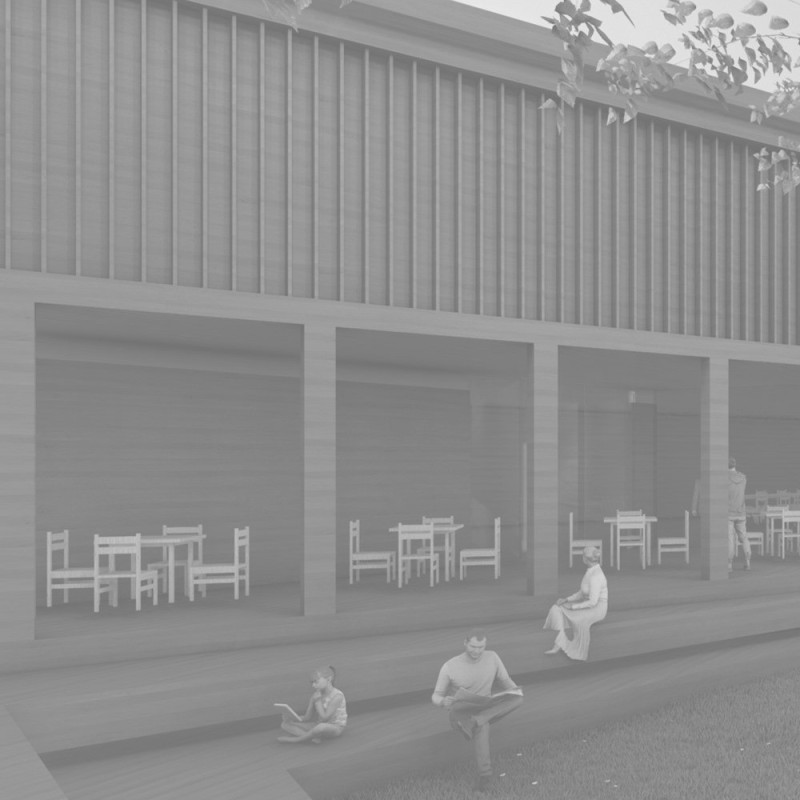5 key facts about this project
At its core, the project functions as a multi-use space that accommodates both public and private activities, enhancing the interaction between different user groups. This duality in function is evident in the spatial organization and layout, which has been meticulously crafted to allow for seamless transitions between areas. The design incorporates open spaces that invite collaboration and social interaction, while private areas are thoughtfully delineated to ensure a sense of comfort and retreat for individual users.
The materiality of the project plays a crucial role in shaping its identity. A combination of locally-sourced materials has been employed, demonstrating a commitment to sustainability and ecological responsibility. The use of natural stone for the façade not only enhances the aesthetic appeal of the building but also promotes durability and low maintenance. Complementing this are wooden elements that add warmth and texture, bridging the gap between the exterior and interior environments. Glass is utilized strategically to maximize daylight penetration, reducing reliance on artificial lighting and fostering a connection with the outdoors.
The design embraces unique architectural ideas that exemplify innovative thinking. For instance, a series of green roofs have been incorporated, creating accessible landscapes atop the structure while simultaneously improving insulation and managing rainwater runoff. This feature not only serves an ecological purpose but also offers users additional communal spaces that can be enjoyed throughout the year. The architecture also demonstrates an adaptive reuse approach, whereby existing structures are harmoniously integrated with new additions, respecting historical contexts while propelling the design into a contemporary framework.
Attention to detail is manifest throughout the project, from the carefully considered junctions between materials to the precise alignment of structural elements. The interplay between light and shadow is a central theme in the design, with features such as overhangs and fins providing visual interest while serving a functional purpose in climate control. This thoughtful approach cultivates an engaging environment for occupants, where each space is designed to elicit particular experiences.
In terms of aesthetics, the project maintains a cohesive visual language that aligns with its surrounding architecture. The façade is characterized by rhythmic patterns that draw the eye and create a dynamic presence in the streetscape. This is further enhanced by landscape design that complements the building, featuring native plant species that require minimal irrigation and provide habitat for local fauna.
The project's conceptual underpinning revolves around the idea of community enhancement through thoughtful architecture. The spaces encourage social interaction, engagement, and connectivity, all essential elements in fostering a vibrant community atmosphere. By prioritizing user experience alongside environmental sustainability, the design transcends mere functionality, contributing to a narrative of social responsibility within urban development.
For those interested in delving deeper into the nuances of this architectural endeavor, exploring the architectural plans, architectural sections, and more detailed architectural designs will provide further insights into the project’s innovative approaches and its potential impact on the community. The architectural ideas showcased in this project highlight the importance of integrating diverse functions within a cohesive design framework, delivering a space that is both functional and inspiring.






















